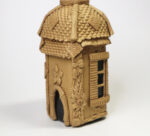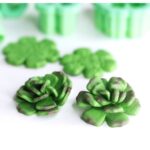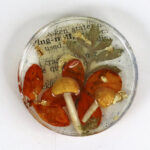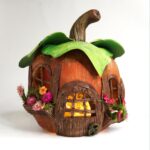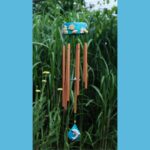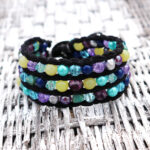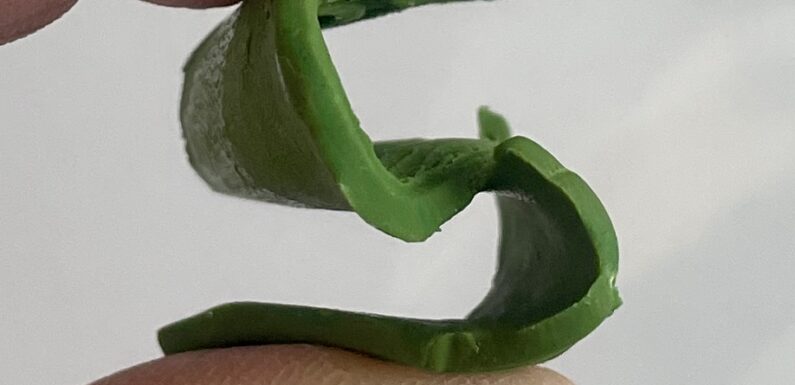
If you’ve ever worked very hard on a sculpture with beautifully detailed, thin, delicate areas only to have them break off later on, you know the frustration of the limitations of polymer clay flexibility.
Yes, thin pieces of polymer clay that are cured properly are flexible after baking, some more than others, depending on the brand.
But even the most flexible of clay brands may not be enough when doing things like wings and antenna.
Enter in Sculpey Bake Shop Bendy Oven-Bake Clay. This is a 16 ounce pack of eight colors of polymer clay (and two bonus plastic tools,)
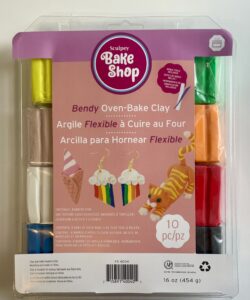
It’s very soft right out of the package, and almost doesn’t need conditioning. The downside is that it can be hard to get fine detail.
One way to achieve detail is to use molds. But since the clay is so soft it can be hard to release it from the mold without distorting. Your best bet is to use a mold that can be baked, such as silicone. If you can’t bake your mold, give it a good spritz of a release such as Armor All.
I experimented with several different shapes and thicknesses. These pieces are all extremely flexible after proper curing. I would suggest you disregard the time instructions. Instead, bake your pieces for 45 minutes to an hour at the specified temperature, 285°F
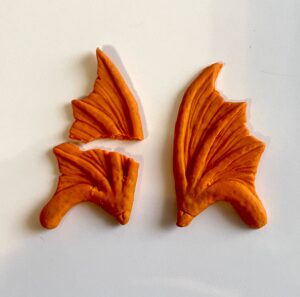
You can see these two dragon wings, after following the directions the one on the left broke when I tried to bend it, but the one on the right bends in half without any signs of strain after a 45 minute cure.

Very thin pieces, such as this feather, can be bent into pretty much any shape you want, while thicker pieces, such as the yellow medallion can be curved to shape an object. It may have to be gently warmed and cooled in shape in order to stay curved.
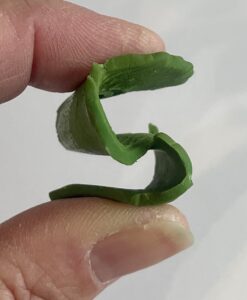
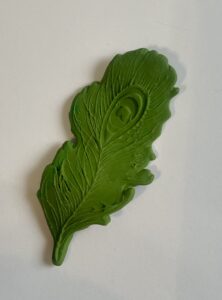
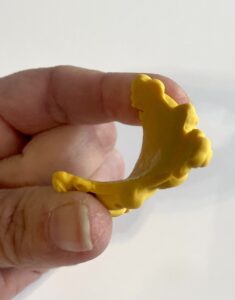
One difficulty with the Bendy clay is that it is difficult to roll very fine without breaking. The dark green clay is 100% Bendy clay and this was as thin as I could get it. The lighter green clay is a 50-50 mix of Bendy clay and Sculpey Premo, and you can see how much more thinly I could roll out.
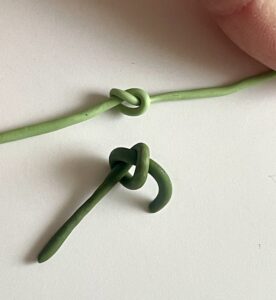
Both are equally flexible after curing, flexible enough to be tied in a knot!
The same goes for sheets of clay, such as you might use on a wing or another delicate protruding detail. Both of these pieces, the 100% Bendy and 50-50 mix, are equally as flexible.
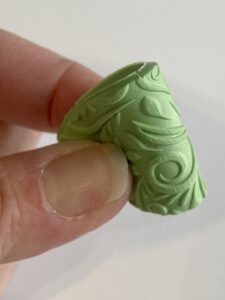
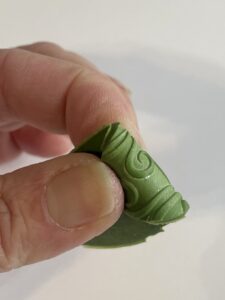
This is going to be wonderfully helpful in keeping your sculptures strong, especially if they include details like mine often do of ears, leaves, vines, and flower petals that protrude.

If you want to add even more shape to your pieces you can try forming them around wire. This is not easy to do, but if you need something in particular and need it to be especially strong, you can gently feed wire into a clay log, then roll it or twist it. These pieces were both baked straight and then I use the wire inside to make them into curlicues after baking.
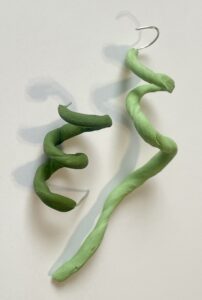
This excellent flexibility, even when mixed with other clay, is very helpful because the colors that come in the kit aren’t great. But with a little bit of color know-how you can mix in other clays to get the not only the exact color shades you need, but the strength you require.
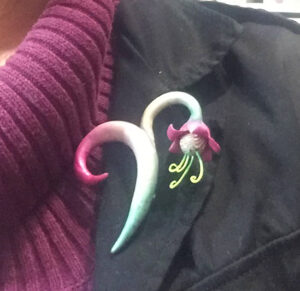
I am excited to try this product on delicate flower sculptures, such as the above brooch. It originally included sweet little curled stamens, but those have long since broken off. <sad face>
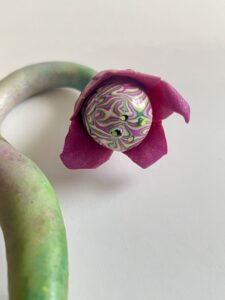
Even the tips of the flower petals have broken. 🙁 I may have to remake this brooch using Bendy clay in key areas.
What kind of details can you think of to use Bendy clay on?
P.S. I purchased this package of clay at Hobby Lobby in the spring of 2024. The retail price was $22.99, which works out to $2.87 per 2 ounce package. Don’t forget to watch their sales, clay usually goes to 40% off every other week.
